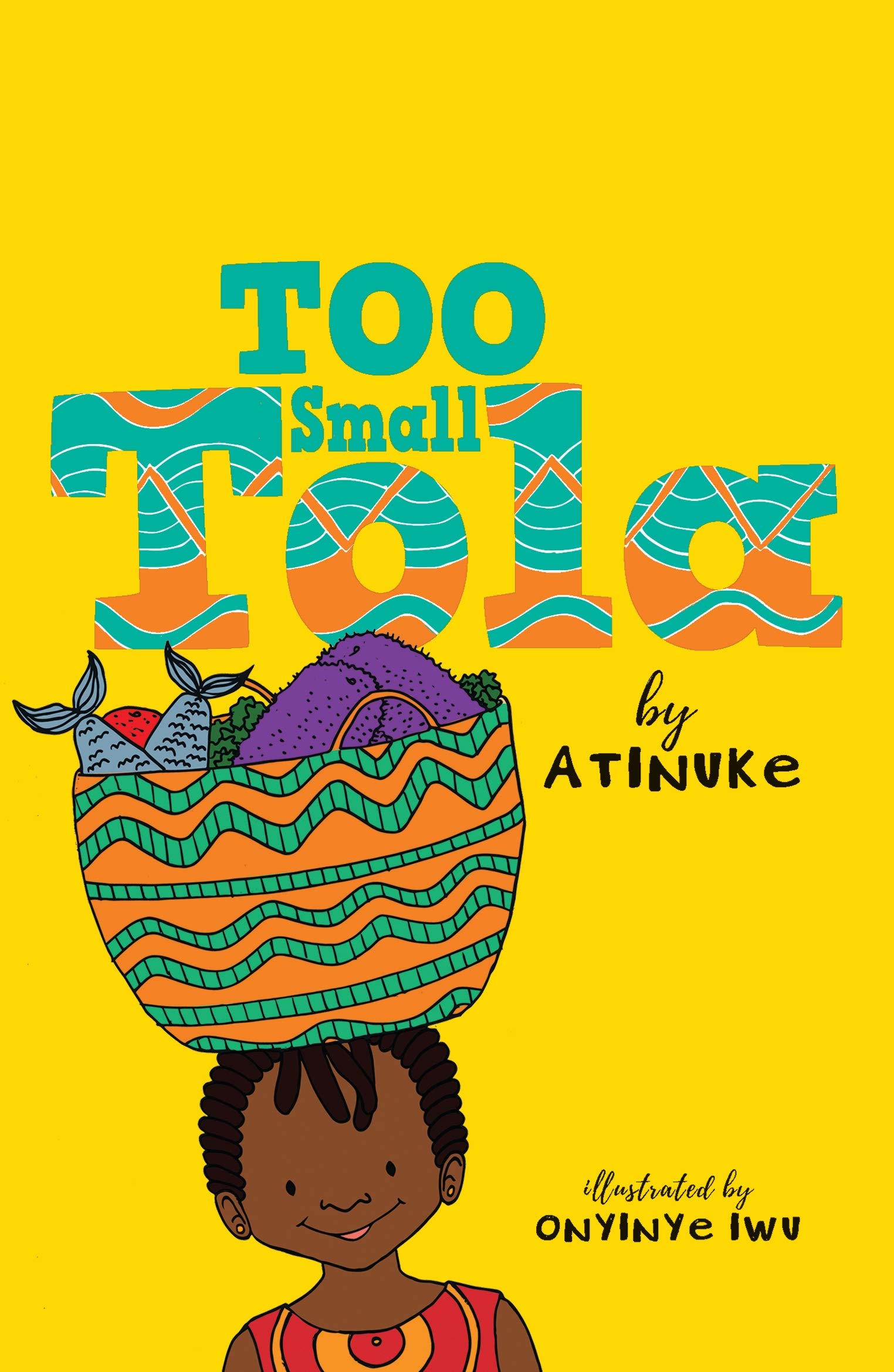Review: Too Small Tola by Atinuke, illustrated by Onyinye Iwu
Too Small Tola, published earlier this year, is the first in a new series of short chapter books by award-winning author Atinuke, also known for the endearing Anna Hibiscus collection.
The book contains three short stories focusing on the everyday experiences of Nigerian child Tola, who is small in stature but huge in personality. She's a determined, dependable maths whizz who deals admirably with everything that's thrown at her, with a little help from her characterful family and neighbours including Mr and Mrs Abdul and Mrs Shaky-Shaky.
Tola lives in a dilapidated one-room apartment in Lagos, with her hardworking Grandmummy, studious sister Moji, and football-crazed brother, Dapo. In the first story, she navigates a hectic shopping trip with Grandmummy. In the second, she deals with their lost water and electricity supply. And in the third, she and Dapo save the day, just in time, for the start of the highly-anticipated Easter and Eid celebrations.
Importantly, the stories present Lagos as a multicultural industrialised city, addressing Western generalisations that all Africans are Black and occupy traditional mud huts. Although Tola is not wealthy she lives in a 'modern' building, attends school, and has access to computer technology. Her hometown, Ikeja, is a bustling urban area where the modern shopping mall — hosting Adidas, Samsung and KFC — sits alongside the traditional fresh food market. In the third story, Atinuke further expands the reader's view by contrasting polluted inner-city Lagos with its more salubrious leafy suburbs which are lined with the gated mansions of Nollywood celebs and business moguls, pointing up the wealth inequality that cuts across race.
Nigerian-born Atinuke includes wonderful cultural details in the text which, supported by Onyinye Iwu's crisp, comic black-and-white drawings, add vibrancy and authenticity to each story. I particularly enjoyed the Nigerian words and expressions, such as 'Ankara' and O-ya’ within the dialogue.
The subtle repetition in the text is perfect for developing the confidence of lower KS2 readers who are ready to move on to chapter books. As a shared book, it could be used to initiate a discussion about homonyms and the potential confusion their double meanings can cause, like when Grandmummy gloriously misunderstands 'mouse' in the first story. Children might extend their learning by creating lists of words with double meanings and exploring the different ways to use these words in a sentence. You could also talk about the words chosen by the author to paint an image of bustling Ikeja in readers’ minds, and children might enjoy drawing their own pictures of the town, or creating repeating Ankara patterns (art and design). Finally, information from the third story could be linked to learning about the religious festivals of Eid and Easter (RE).
Although the first and third stories are stronger than the second in terms of plot, overall the sharp witty interplay between all the characters carries the day. Especially in the case of the family dialogue, which is so amusing and extremely relatable.
This delightful lighthearted book celebrates not only Nigerian families but also the rich cultural diversity of a metropolis, which is so important for extending children's perceptions of different countries' cultures and traditions. It's a must for every primary school and I very much look forward to Tola's future adventures!
Notes for teachers and parents
Coming soon: Too Small Tola and the Three Fine Girls (January 2021)
Guide for teachers and parents
|
Genre |
Narrative: stories from other
cultures |
|
Child-led interests (EYFS) |
N/A |
|
Age group (EYFS, KS1, KS2) |
KS2 (lower) |
|
Curriculum links/topics
(EYFS/NC) |
English Reading comprehension (Y3/4) –
Art and Design – to improve their mastery of art and design techniques, including
drawing, painting and sculpture with a range of materials [for example,
pencil, charcoal, paint, clay] Religious Education – Islam and Christianity |
|
Suitability |
whole-class, school/class library,
home library |
|
General features |
third-person
narration, present tense, informal dialogue, repetitive story opener, adjectival
descriptions and some similes |
All the Black children's books that I review are checked against my Jericho Benchmark.



Comments
Post a Comment